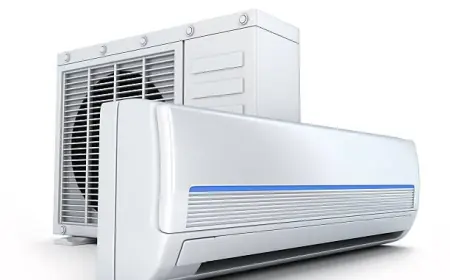Understanding HDPE Sheets: A Versatile Plastic Solution
High-Density Polyethylene (HDPE) sheets have emerged as one of the most sought-after materials in a variety of industries, thanks to their unique properties and versatile applications. Known for their robustness and resistance to various environmental factors, HDPE sheets plastic are a reliable choice for applications ranging from construction to packaging. This Mahira Polyglobal LLP aims to provide comprehensive insights into HDPE sheets, exploring their properties, benefits, applications, and frequently asked questions.
What Are HDPE Sheets?
HDPE sheets are made from high-density polyethylene, a type of thermoplastic polymer. This material is created through the polymerization of ethylene, resulting in a solid sheet that exhibits remarkable strength and rigidity. Generally available in a range of thicknesses and colors, hdpe plastic sheets can be tailored to meet specific requirements, making them suitable for various projects. Their production is increasingly incorporating recycled materials, which enhances their environmental appeal. This focus on recycling not only allows companies to reduce waste but also supports sustainability goals in various industries.
Properties of HDPE Sheets
The properties of HDPE sheets contribute significantly to their popularity across diverse applications. One of the primary advantages is their exceptional chemical resistance. HDPE sheets can withstand exposure to a wide range of acids, bases, and solvents without losing structural integrity. Additionally, the plastic HDPE sheets are non-reactive, making them ideal for food processing applications where hygiene is crucial. Moreover, they are water-resistant and have low moisture absorption, which further extends their usability in humid environments. Furthermore, HDPE sheets are durable and can endure extreme temperatures, making them applicable even in challenging conditions where other materials might fail.
Applications Across Industries
Industries around the world are increasingly adopting Low density polyethylene price in india for multiple applications. In the construction sector, these sheets are often utilized for making structural components, such as wall panels, architectural facades, and safety barriers. Their lightweight nature facilitates easy installation while providing reliable support. In agriculture, hdpe plastic sheets are used as liners for ponds and agricultural covers to shield crops from adverse weather. These sheets not only help in water management but also enhance productivity by creating controlled environments for crops. The wide-ranging applications also extend to the manufacturing sector, where plastic HDPE sheets are used in packaging solutions due to their durability, ensuring that products remain safe and secure during transit.
Advantages of HDPE Sheets
There are numerous advantages associated with using HDPE sheets in various applications. One of the most significant benefits is their cost-effectiveness; while the initial investment may be similar to other materials, the durability and longevity of HDPE sheets reduce the need for frequent replacements. This durability translates into lower life cycle costs, offering businesses long-term savings. Additionally, the manufacturability of HDPE sheets allows for easy customization, enabling industries to create tailored products that meet specific requirements. The sheets can be fabricated into different shapes and sizes, enhancing their utility further. Lastly, their resistance to UV radiation ensures that they can be used in outdoor applications without significant degradation over time.
Sustainability Factors
As sustainability becomes a more pressing concern for industries globally, the advantages of HDPE sheets in this arena cannot be ignored. The production of plastic HDPE sheets involves considerable use of recycled materials, contributing to a circular economy. Companies are increasingly recognizing the need to minimize waste, and many now opt for HDPE sheets to align with eco-friendly practices. Furthermore, the energy required to manufacture HDPE sheets is relatively lower compared to other plastics, which enhances its appeal to manufacturers focusing on reducing carbon footprints. The recyclability of HDPE sheets at the end of their long service life is another vital consideration, making them a preferred choice for environmentally conscious businesses.
Challenges in the Use of HDPE Sheets
Despite the many advantages, there are challenges associated with the use of High density polyethylene plastic. One notable issue is their susceptibility to stress cracking. In applications where HDPE sheets are subjected to prolonged loads or high-stress conditions, there is a risk of cracking, which can lead to structural failure. Therefore, proper engineering and design considerations must be taken to mitigate such risks. Additionally, while HDPE sheets can be welded, bonding them with adhesives can be challenging due to their low surface energy. This aspect demands specialized preparation techniques to ensure that the bonding results are reliable. Finally, while they perform well in various temperatures, choosing HDPE sheets for extreme thermal conditions should be approached with caution due to their varying performance characteristics at different temperatures.
The Future of HDPE Sheets
Looking ahead, the market for HDPE sheets is poised for continued growth, primarily driven by advancements in manufacturing technologies and an increasing focus on sustainability. With new innovations, manufacturers are expected to enhance the properties of HDPE sheets, making them even more versatile and applicable in emerging industries. The development of biodegradable additives for HDPE sheets could provide an additional sustainable option for users. Furthermore, as businesses increasingly seek solutions that align with their corporate social responsibility targets, the demand for eco-friendly materials like HDPE will likely expand. Industries such as renewable energy and electric vehicle manufacturing are already exploring the benefits of HDPE sheets in their applications, suggesting a promising trajectory for this material.
Conclusion
In summary, Polyethylene sheets are a versatile and durable material that is well-suited for a wide range of applications across various industries. Their unique properties, including chemical resistance, moisture management, and lightweight nature, make them a reliable choice for projects in construction, agriculture, food processing, and more. With their emphasis on sustainability and recyclability, HDPE plastic sheets align well with the increasing demand for eco-conscious materials. As technology progresses, the potential applications of HDPE sheets are likely to expand further. By understanding and leveraging the benefits of this material, businesses can make informed decisions that contribute to both operational efficiency and environmental stewardship.
Frequently Asked Questions (FAQs)
1. How do HDPE sheets compare to other plastic materials?
HDPE sheets offer superior chemical resistance and durability compared to many other plastics. They are also generally more cost-effective in the long run due to their longevity.
2. Can HDPE sheets be used in food processing?
Yes, HDPE plastic sheets are non-reactive and resistant to bacteria, making them suitable for food processing and packaging. They are easy to clean and maintain hygiene standards.
3. What factors should I consider when selecting HDPE sheets for my project?
Key considerations include the intended application, environmental conditions, required thickness, and whether bonding with adhesives is necessary. Proper handling and installation techniques are also crucial.
4. Are HDPE sheets recyclable, and how can I dispose of them?
Yes, HDPE sheets are highly recyclable. When disposing of them, check local recycling programs to see if they accept HDPE materials, and ensure they are cleaned thoroughly to facilitate the recycling process.
What's Your Reaction?
 Like
0
Like
0
 Dislike
0
Dislike
0
 Love
0
Love
0
 Funny
0
Funny
0
 Angry
0
Angry
0
 Sad
0
Sad
0
 Wow
0
Wow
0



















































